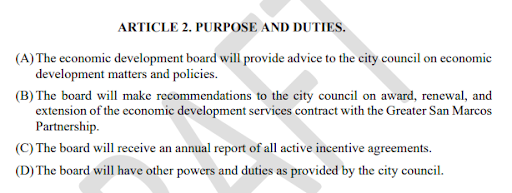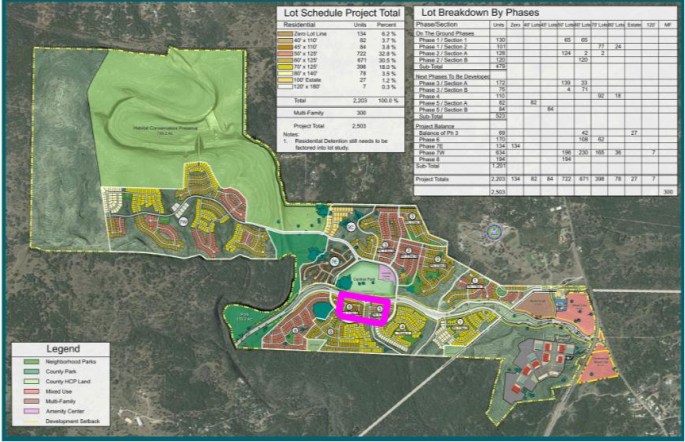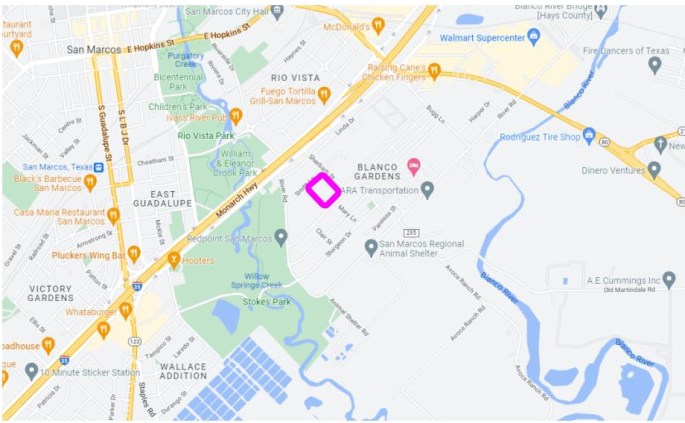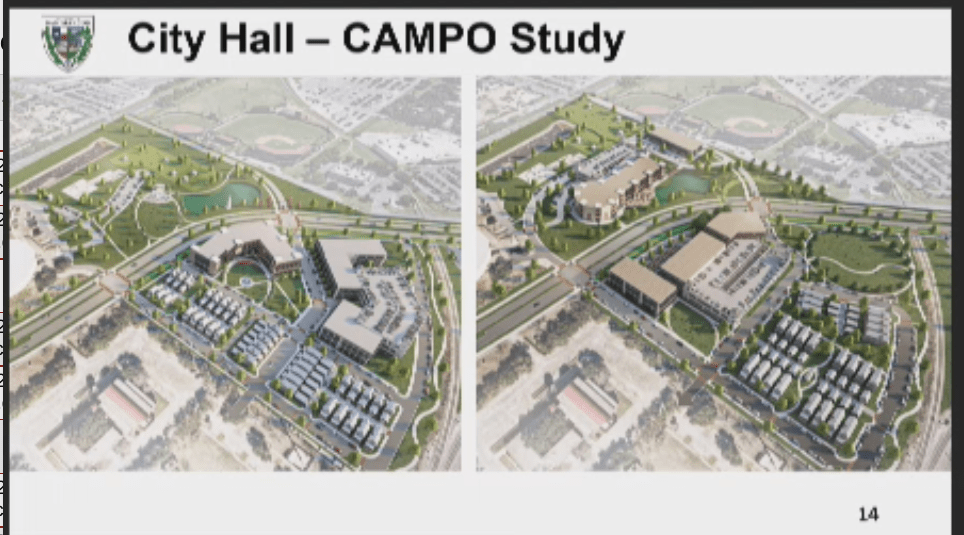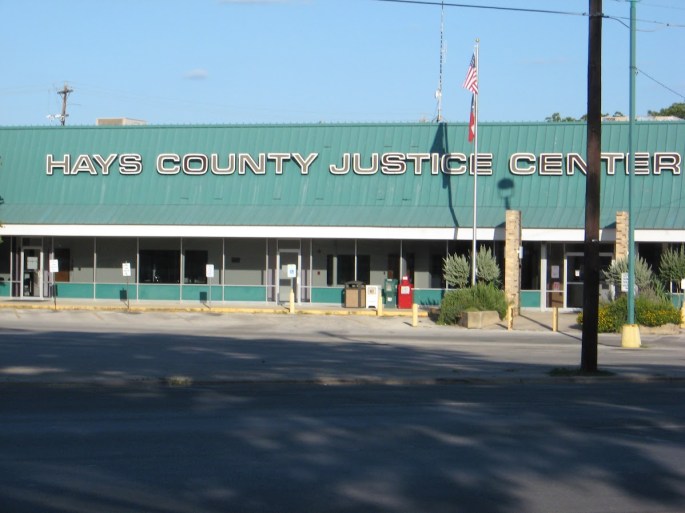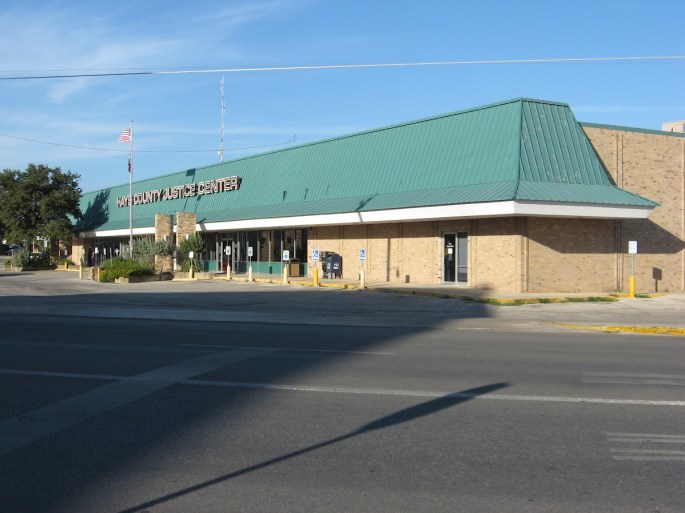Here’s my official thoughts on candidates!
I listened to the League of Women Voters and the Hays County Democrat forum. I don’t have recordings of anything else, but feel free to point me towards them.
Short-short version:
- Jane vs John for Mayor:
I’m actually on the fence. I trust Jane 100% to be honest, but I disagree with her principles in significant ways. (She’s solidly centrist on the business community, cops, and the environment.) Based on his debate answers, I’m still nervous that putting John together with Shane, Jude, and Mark is going to mean open season for developers to maximize their profits, and we will not require developers to build what’s best for San Marcos. Developers are not your friend!
Here are two truths:
- We need housing
- Developers are going to prioritize profit over what’s best for San Marcos
Here are my fears: Jane isn’t going to prioritize dense housing enough, and John will let the developers get away with murder.
Conclusion: vote for whoever you want.
2. Matt vs Max for Council Seat #1:
Matt Mendoza comes from a family that is deeply woven into San Marcos. He’s new to politics. He seems bright and eager to learn. At the Hays Dems thing, he was forcefully pro-GRACE act (not criminalizing abortion) but lukewarm on Prop A. My guess is that he’s left of center on some issues and centrist on others. I would love to see him grow and develop on P&Z for another year. (Perhaps he would enjoy reading this very blog for a year, idk.)
But Max knows so much, and is so clear on what he’s fighting for, and he’s fighting for the right things. We’d be fools to vote him out. If Max learned to cajole and charm people into buying into his ideas, he’d be unstoppable. (At one point, Max made the case that he’s gotten less argumentative and more collaborative since the DEI workshop in August. Could be! He needs more time to build up a track record.)
Conclusion: Vote for Max, save Matthew for next year.
3. Saul vs Atom for Council seat #2:
I am pretty harsh on Saul for his answers below, because they are so entirely devoid of content. He is an open ear to large portions of the San Marcos Hispanic community, but I don’t think he does anything with the information that comes in. He’s been on council for two terms, but can’t answer basic questions. I became very exasperated with him.
Does that mean you should vote for Atom Von Arndt? Look, I don’t know. He’s the outsider. He was at his best when he spoke bluntly (WINK) on Prop A: sending people to prison for possession of pot supports the private prison industrial complex. So I think he has a general liberal bent. And he seemed like a bright person who was willing to learn. But he has a lot to learn. (And he’s got a thing for clown facepaint.)
Conclusion: Vote for whoever you want.
And now, the long-long answer!
The LWV debates are super short, ringing in at just under an hour. Candidates are only given one minute to answer each question. Also, they held it on Tuesday, and Matthew Mendoza had a P&Z meeting. So that seems a bit unfair.
The Hays Dems forum gave each candidate plenty of time to speak at length and then field questions. But only Jane Hughson, Max Baker, and Matthew Mendoza were there.
First up is the Mayor Race:
Opening Statements: Both candidates give basic bio details. What can you say in a minute? They’ve both lived in SM forever. Jane Hughson worked at Texas State for decades and has been on a billion community service organizations. John Thomaides owns a business involving water somehow. They both like buzzwords about “common sense” and “being frugal” and “balance”.
The Hays County Democratic forum gave a much longer stretch for candidates to talk, but John Thomaides wasn’t there. Jane talked at length about all her experience – she’s worked with every San Marcos organization under the sun – but I didn’t exactly learn anything new. We know how she governs.
First question: Diversity/Equity/Inclusion?
I’d say both candidates give equally half-assed answers. Jane Hughson says it’s the right thing to do and we had a half-day retreat. She defends her effort to cut the equity coordinator from a $400K/4 year position to a $200K/2 year position, saying that we need to embed the position permanently. I guess? You still jeopardized two years of funding for the position.
John Thomaides says all the departments should practice best practices. And Austin has a whole DEI department, and we’re not there yet. It’s a balance. He did not seem like this is an urgent issue to him.
Second question: Housing Density?
This might be the question that tips the entire election towards Jane, if I know our NIMBY friends.
John answers first: we need infill-friendly policies. We need to consider things like condos and townhomes.
Jane Hughson says: You need density to make transit work. We allow smaller lots now. I absolutely will not touch old neighborhoods, but maybe new neighborhoods could experiment with smaller lots?
Thomaides’ answer is closer to what I believe. I wish he’d mentioned a sense of scale, because I’m still skittish about the giant apartment complexes that went up a decade ago while he was on council. There’s a big difference between 4-plexes and 8-plexes integrated throughout neighborhoods, and something like The Cottages and The Retreat, forming their own entire ecosystem.
However: the old neighborhoods in town are extremely spooked by the word infill. They are convinced that frat boys will pee on their hedges, fill the streets with Coors Light cans, and throw massive house parties that last until 3 am. And sometimes, the unspoken part is that they just don’t want to live next to poor people.
Third question: Homelessness?
Jane Hughson’s answer: there are many reasons people are homeless, and you have to tailor individual responses. The Homeless Coalition is working to do that.
John Thomaides’ answer: Every city is dealing with this. You can’t give every person a house. Find those people who are willing to change and work with them. It’s a difficult issue.
I’m giving this point to Mayor Hughson. Thomaides’ answer sounded defensive and like he is going to blame homeless people for not wanting to change, and therefore they don’t deserve help.
Fourth question: Infrastructure? How to evaluate a project?
John takes this to mean “how does SM decide which city projects to work on?” He wants to re-do how we award contracts.
Jane says that you have to work with engineers, and modify how much different projects disrupt peoples’ lives.
Closing Statements
I am allergic to the kind of buzzword-heavy scripted statement that candidates are compelled to cook up here. “I will be all things to all people!” It’s a waste of time to scrutinize these crumbs and say anything meaningful about how they’d be on the dais.
What about other topics?
The environment/river: John’s website and Facebook make it clear that he works his tail off to clean up the river and feels strongly about littering.
Does that mean he’s willing to vote for constraints on businesses that want to develop over the aquifer? I have no idea. What about broader measures towards sustainability? What kind of cost is he willing to impose on businesses to force them to implement sustainable solutions? I have no idea.
Jane tends to support the river, and is willing to work with businesses on greener solutions, but she’s not going to force anyone towards anything game-changing.
My guess is they’d be roughly the same on the environment.
Cops/crime: John’s website doesn’t say anything, and Jane has been pretty centrist. She voted against cite-and-release, I think, but then came around and supported its renewal. (Which Chief Standridge also supported.) My guess is they’d be roughly the same, here, too.
What about their past voting records as Mayor and on council? This takes so much work to properly summarize. For example, in 2011 and 2012, there was a big city fight about a proposed development over Sessom Creek. Here’s an article that says it was postponed . Here’s an article that says a previous vote was a no, and now it’s scaled down. Neither say how anyone voted. I’d have to look it up to see if Thomaides was even on council in 2012. The two main places that I go to find the council archives only go back to 2014. Oh wait! Thomaides was instrumental in its defeat. Good job, John.
What about the HEB shitshow, on the corner of Wonderworld and Hopkins? In 2016, slightly over a year past the Memorial Day floods, HEB applied to rezone the corner of Wonderworld and Hunter – right next to purgatory creek, which had just flooded the previous October. The plan was to put curb cuts on Wonderworld, west of Hunter. It was an insanely terrible location and the town was furious. Both Hughson and Thomaides voted in favor of it, though, so that’s a wash in terms of your upcoming mayoral decision. What about the Woods? Thomaides (and Jude Prather) both voted against it. Jane Hughson wasn’t on council back then.
I have a vivid memory of a controversial vote where (some? all?) the men all left the room to avoid going on record, and Lisa Prewitt, Jane Hughson, and Melissa Derrick were all left sitting there holding the bag. But I can’t place it. I thought it might have been Cape’s Dam, but it appears John and Jane both voted originally to remove it.
Since Jane’s been mayor, she voted against cite-and-release, but since then tentatively supports it. Covid hit. How should we spend $18 million in American Rescue Plan dollars? She did not apply any pressure over Ryan Hartmann. She helped rewrite the Land Development Code. I dunno – their two stints in office have been characterized by very different kinds of issues.
Here’s the thing: I didn’t watch city council meetings when John was mayor. I don’t know if he’s careful and judicious, or if he comes unprepared to meetings, or if he makes his decisions ahead of time, or if he comes with an open mind and discusses things in good faith. There were ethics complaints against Scott Gregson while John was mayor, and in my mind, I had them as friends. But again, I did not listen to the council meetings where those issues were actually discussed. There is a wealth of knowledge out there on how John governs, but I don’t have it.
The Other Council Seats
It’s kind of shitty, but they held the debate during a P&Z meeting, and so Matthew Mendoza was in a bind. He sent over a short personal statement and skipped the debate. However, he was at the Hays Dems forum, and got to speak for as long as he wanted, and then answered questions.
Summarizing Matthew Mendoza on his own: Born and raised here, loves this city. Some sort of IT guy.
- Tentative Yay on Prop A, but not whole-hearted.
- On the river: Absolutely no development within 100 yards! Beyond that, we’ll have to work with the developer. We need to shake down businesses like Chuck Nash for donations to help fund conservation efforts.
(This is not a great answer – I’m pretty sure there’s already no development within 100 yards. And you can’t work with developers unless you’re willing to walk away. Otherwise you’re just letting them hold all the cards.)
- On abortion/the GRACE act: enthusiastic support for not prosecuting women.
- On animal shelters: he’s a softie for animals and wants to support the shelter.
None of those are nitty-gritty answers that tell you that he’d hold corporations’ feet to the fire, but it would have been very hard for him to pull that off. Like I said, my guess is mostly centrist, maybe tilting to the left.
Onto the debate itself!
Note: From here on out, I’m sticking with the League debate, and mostly ignoring Max’s answers at the Hays Dems Forum. His answers were interesting and the whole thing is worth listening to, but he already has way more to say than Saul or Atom, and it just would be too lopsided.
Opening statements
Max’s keywords are sustainability, equity, and transparency.
Saul’s new grandbaby was born today!
Atom Von Arndt is relatively new to town, and a renter, with a regular job, who keeps scratching his head at how we do things here.
Question 1: What are your priorities?
Max’s priorities are sustainability, equity, and government transparency. He wants more town halls and more engagement.
Saul’s priorities are flooding. Work with small businesses. Housing but NOT in existing neighborhoods. Finish the projects that are midway through.
Atom’s: Roads. Why do we have bike lanes to nowhere? What the hell happened at Hopkins and 35? Affordability. More outreach.
Question 2: Homelessness
From this point on, Max is just playing a completely different game than Atom and Saul. He can just rattle off such a more well-informed, complex answer, with specific examples and experiences he’s had to fortify it.
It really reflects most poorly on Saul. Of course Atom doesn’t know the details – he’s brand new and running as an outsider. But Saul is running for his third term. He should know a lot by this point.
Here’s what I mean – on homelessness:
- Saul says, “Outreach! Provide education and mental health services”
- Atom says “Outreach and mental health.”
- Max says “I have volunteer experience with XYZ org, we did a homeless study with the American Rescue Plan funding, I’m focused on implementing a continuum of care with all the organizations in town, which I can enumerate. Want to talk about transitional housing? A housing-first policy is important. We need to de-silo our non-profits – they’re a patchwork and not cooperating that well.”
When Max speaks, you get the idea that he could keep going for another ten minutes with developed ideas. When Saul talks, it feels like the kid hoping that the teacher won’t notice if they increase the margins, increase the font size to 14, and triple the line spacing to get their essay up to two pages.
Question 3: How do you evaluate infrastructure?
Atom: He’s comfortable ranting here. Why did we spend $10 million on fancy street lights for Hopkins?! [Note: we didn’t.] What’s up with these nutty bike stoplights to nowhere? What the hell is going on with I-35 and Hopkins? We should be fixing the drainage and potholes!
I mean…those are the kind of questions you get from outsiders. They’re easy to ask. The answers are slow, technical, and wonky. This doesn’t make him a bad candidate for office, but it doesn’t tell you much about what he’ll do when he gets there. (Actually, it tells you the very first thing he’ll do: he’ll learn that those answers are slow, technical, and wonky.)
Max goes next: Equity, equity, equity! Evaluate projects through an equity lens. Bring your full understanding of historical and systemic biases.
It’s really a pretty good answer.
Saul: We need to have different parts of the pie. You can’t give the whole pie to one project. There need to be consequences for contractors who go too long.
SAUL. We do have different parts of the pie. You just approved a budget, which is literally how you divide up the pie. What on earth are you nattering on about.
Question 4: Density?
Max: The only infill that gets financing is large scale multifamily. Can we figure out how to do small-scale infill, like the mini-complexes on San Antonio? Sprawl drives up everyone’s taxes and is bad for everyone.
This is fairly close to my own answer: 4-plexes should be allowed by right, anywhere. 8-plexes should be allowed very often. Sprawl is bad.
Saul: Smaller homes on smaller lots!
Twice Saul refers to the zonings “CF4.5” and “CF5”, and I’m pretty sure these don’t exist. My memory is that there is SF6 and SF4.5, (Single Family 6 and Single Family 4.5), and there is CD4 and CD5, (Character District 4 and Character District 5). But there’s no CF anything.
It’s really not a big deal – people misspeak all the time. But he’s not providing other evidence that he really does know what he’s talking about. And he was on P&Z before his two terms on council, and he was on council when they re-did the land development code.
Atom: Mixed use apartments downtown are insanely expensive, and then that allows other landlords to raise their rents too. We’ve got to build more housing and make sure it’s affordable.
He’s not yet plugged into the NIMBYism he’ll face, but sure, his instincts are fine.
Question 5: Yay on Prop A?
Saul: 4 oz is a LOT. That’s 475 joints. That’s not personal use. But I voted to let the voters decide.
Atom: YAY! Pot possession just feeds the private prison industrial complex. We should do anything we can to keep people out of the criminal justice system.
Max: In 2019, I ran on Cite and Release. 4 oz is because that’s where the state of Texas draws the line between “little” and “lots”. It only applies to nonviolent offenders, and just possession.
I appreciated Atom tying this into the larger human rights issues associated with our prison complex, because that’s mostly where I think the moral salience comes from, too.
Question 6: Diversity/Equity/Inclusion?
Atom: It’s everyone’s town! We need a ton of engagement/outreach.
This is both right and wrong. We do need a ton of outreach, but it’s way harder than he’s imagining. Solving the outreach problem is not just a matter of good intentions.
Max: I advocated for a 4 year DEI coordinator. Every person on the DC trip told us to keep DEI front and center. Equity lens helps us do everything better: better policing, better planning. I want to pay people for feedback.
(I don’t think that last sentence is quite right. That doesn’t target the people that are hardest to reach. We have to do the hard work of showing up at barbershops, churches, and working with well-connected existing groups like Community Action, the food bank, the women’s shelter, etc. It just takes a ton of labor, ultimately.) But aside from that, Max generally has a solid track record of voting to support DEI and think about issues connected to it.
Saul: You guys, you need to hear Saul’s entire answer, in his own words:
“First of all, I think everyone should be treated equally and fairly, no matter what walk of life they come from. I think something we have to remember, also, is that people have different cultures and different heritages, and we gotta take that into consideration as well. Those are two things that I’d like to really focus on. And maybe we can someday live in that world. That’s all I have. Thank you very much.”
Read that outloud, and time yourself. Saul manages to make it last almost 40 seconds. (It starts at 50:51 if you’re interested.)
WHAT THE HELL. There’s no there there.
Closing statements:
Saul: I want to finish projects we started. Covid delayed everything. I’ve never seen anything like that.
Atom: I heart San Marcos. I’m a single dad with a 10 year old. My superpower is that I can connect and communicate with everyone really well, so I can get out there and find out what people want.
Max: The DEI workshop made me a better collaborator. I was endorsed by the Hays Women’s caucus.
And that’s a wrap!
No grand conclusions from me. BUT, if you’re feeling moved to do something, reach out to Hays County Democrats about helping on election day to make sure MAGA “poll-watchers” aren’t intimidating voters and sabotaging democracy.








